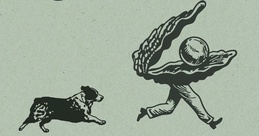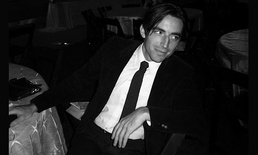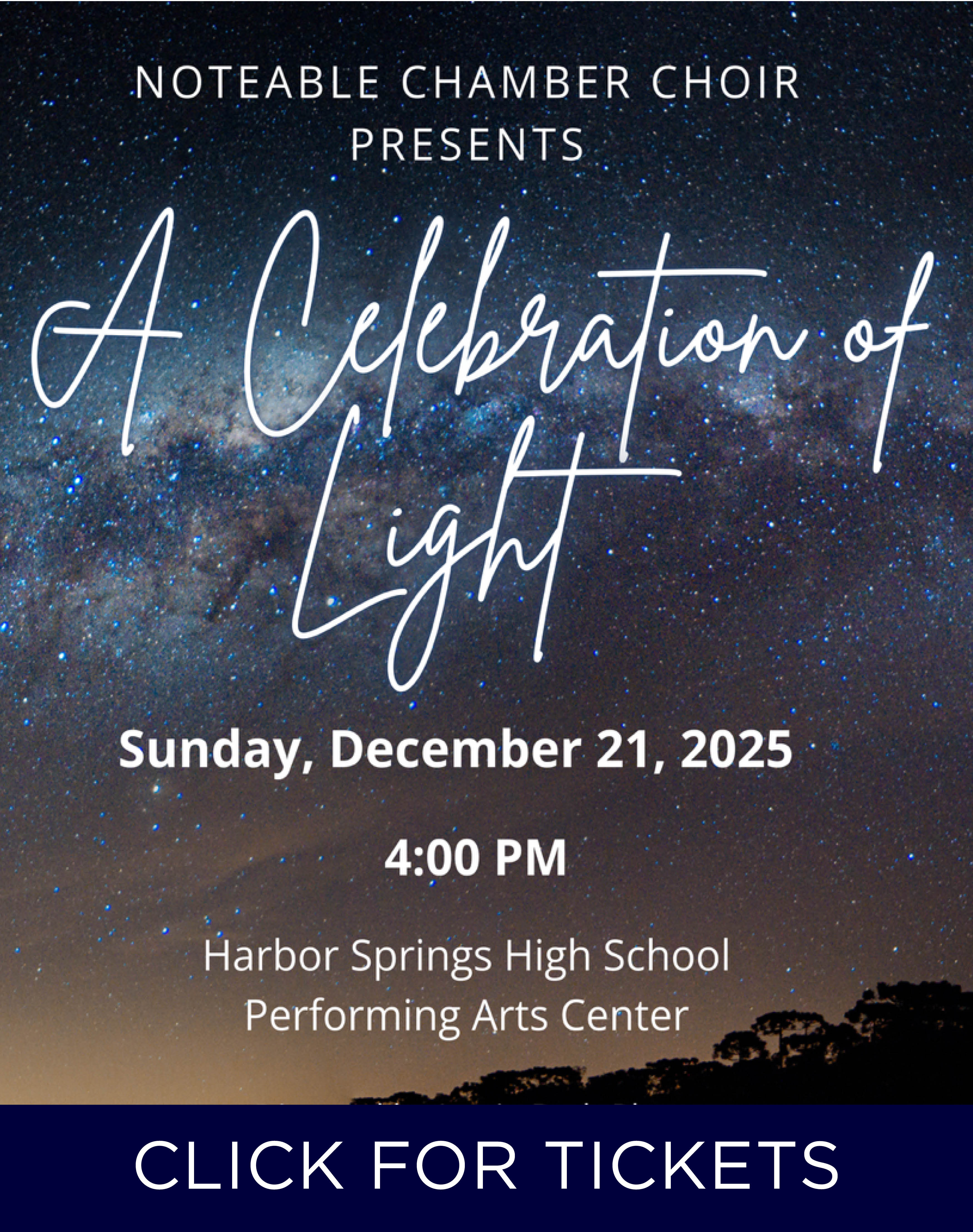For the love of a fiddle
Feb. 3, 2008
When Stass Pronin set out for one of his first violin lessons, he wanted to be prompt, knowing the demanding nature of his grandfather, a world-class violin teacher.But as the young eight-year-old crossed a stretch of scorching Israeli desert, his feet dragged. He was a few minutes late when he finally arrived. His grandfather opened the door, his face impassive. He looked at his watch, and said, “You’re late, go home.”
Stass walked another 40 minutes back home in the heat. He was never late again.
Russians take their music seriously and that’s what makes them so fascinating, said Jim Bruno.
MAKING YOUR FATE
Jim Bruno is somewhat of a hero to Stass, who will perform on Valentine’s Day, using an 1859 J.B. Vuillaume violin that Bruno loaned to him.
Bruno is a bookish Traverse City financial consultant, who couldn’t play—or dare to play—a scale on a violin if you paid him. Yet he knows his violins and has dedicated the last 12 years of his life to putting them in the hands of musicians like Stass who need them.
In fact, Stass played a key role in catapulting Bruno into the rarified world of violin dealers and Russian musicians. His performance at the City Opera House in Traverse City will mark six years since Bruno first heard him play at a competition at the age of 16.
At that time, Stass spoke little English and seemed a little shell-shocked from his experiences at a rough and tumble alternative high school in Bloomington (he was studying at the University of Indiana at the age of 14, but was also taking academic classes for a high school degree).
Bruno said he was stunned by the virtuosity of Stass, who began violin lessons at the relatively late age of eight. Two years later, however, he was performing throughout Israel, the United States and Europe.
How they met up is a story that proves fate is sometimes what you make it.
A CHILDHOOD DREAM
Strange as it sounds for a young boy, Bruno dreamed of owning an Italian violin made by Antonio Stradivari, 1644-1737, or his contemporary Giuseppi Guarneri (1698-1744), who rivaled his more famous contemporary.
Bruno played piano, not violin. Still, he was drawn to classical music, which he believes is unparalleled in its complexity and passion. He took a quick detour in his early teens to rock guitar, and put his dream on the back-burner.
It was an unrealistic dream, anyway, he thought for years. He’d read news accounts of Italian violin prices being driven into the seven-figures at auctions. He worried that the finite number of 300-year-old violins was going into private foundations or behind museum glass instead of the hands of violinists.
Bruno can’t remember what triggered his decision, but 12 years ago he made up his mind to own a good violin—not a Strad or Guarneri, but
perhaps, someday, an old Italian violin.
But first he needed to learn more.
His opportunity came in 1990. His friend and work colleague, Jeff Hopp, happened to be the son-in-law of Ruggiero Ricci, one of the world’s top violinists.
Hopp told him that Ricci was visiting Ann Arbor to make a recording and asked Bruno if he wanted to hear him play.
“I jumped at the chance. We left work, heard some great music, and I saw my first del Gesu violin, a true work of art, within touching distance. I used every bit of restraint to keep from asking if I could hold it.
“Jeff told Ricci that I wanted to buy a violin, but that I had no expertise.”
Without being asked, Ricci eventually visited the Curtain & Alf violin shop in Ann Arbor and chose an Alf violin for Bruno to buy.
“The bug bit me. Hard,” Bruno said.
GIVING BACK
Buying the violin inspired Bruno to return to his childhood passion of playing piano.
He took lessons at Interlochen Arts Academy from a Russian pianist, who introduced him to a Russian violin teacher, Julia Bushkova.
Julia is a beautiful woman with a flair for the dramatic. But she didn’t have to exaggerate the plight of her gifted students, who were born in obscure corners of the world and arrived at Interlochen with literally nothing but their god-given talent. They had survived on a diet of terror and wretched poverty, and depended wholly on scholarships and private benefactors.
Bruno grasped the irony of their reality. These students who could make a violin come alive were the least likely to afford one. The collectors and museums had indirectly driven prices of violins into an impossible realm for these kids and even the most elite players.
One evening Julia’s brother performed at the Milliken Auditorium, playing a Stradivari violin on loan from the Russian government.
After the concert, Bruno gathered with the Bushkovas and other violinists who played different violins, and compared them to the priceless Stradivarius.
That night opened Bruno’s eyes to the intricacies of violins, bows, and how even a millimeter of wood makes all the difference in the strength and quality of sound. Even bows must be of the highest make.
“Most people don’t know that bows are instruments in their own right—some sell for as much as $400,000. The hair on a good bow comes from a particular horse in Mongolia.”
MEETING STASS
Bruno was easily persuaded to loan his Alf violin for a year to a poor Polish boy. He graduated, and the violin went to another aspiring student, and he gave it back. And so it went, until Bruno loaned the Alf violin to an Uzbekistani girl. But she didn’t want to give it up.
“She was accepted into the music school at Indiana University, and she wanted to take it to college. She pleaded with me. So what was I going to say? They all had nothing, but she had nothing, nothing. I couldn’t say no. So I told her, you can use it, but you’ve got to help me find another one.”
So that’s how Bruno came to call on Nelli Shkolnikova, the girl’s new teacher at Indiana University.
Nelli, at first, was skeptical, but then agreed to help Bruno find a replacement that would meet her standards. Bruno contacted violin dealers who later showed their wares to Nelli, one of the greatest Russian violinists of her time, and other lions of the violin world.
Nelli and several other Russian violinists put the instruments through a gauntlet and rejected them all .. “E string no good … G string weak … not pleasant sound.”
Nelli later explained to Bruno: “A violin is like a singer. She can have strong voice, but not beautiful. A beautiful voice, but not strong. What you want is a singer with a beautiful voice, which is a strong voice.”
On top of that, the instrument must not be too difficult to play.
“That was the best explanation anyone had ever given to me,” Bruno said.
A TOUGH LIFE
Bruno was disappointed that Nelli came up empty-handed, but soon one of Nelli’s friends—a former student who played for the Pittsburgh Symphony—found a violin for her to test. She approved.
“It took a Russian to satisfy another Russian, which is what it came down to,” Bruno said.
Bruno bought the violin, and Nelli told him of Stass, a gifted young Russian whose talent was deserving of it. She discussed how hard he worked and how his family was in terrible circumstances.
Stass grew up in war-torn Israel, trying to practice despite the erratic violence around him. At the age of 12, he was invited to play at the International Music Festival in Los Angeles. He returned to Israel, and two years later, he contacted Nelli, anxious to leave Israel where he said Russians are generally disliked. They met up in Spain where he quickly agreed to study with her.
Once in Indiana, 16-year-old Stass lived with his mother while his father remained behind in Israel. His mom struggled to keep food on the table, while trying to navigate the immigration labyrinth.
Meanwhile, Stass had to practice six to eight hours a day, something his high school buddies could barely fathom. Nor could they much appreciate his family’s musical pedigree.
Stass was born in Moscow, and his family moved to Israel when he was 8 years old. His grandfather taught at the Odessa Conservatory in Russia and was a friend of the famous composer Dmitri Shostakovich, who would write new music and then send it to Stass’ grandfather to play. Stass’ mother studied singing at the Bolshoi Theatre, and his father was a professional violist.
“It is kind of funny that Stass does not think any of this is a big deal.... as if the typical Russian family were comprised of gifted musicians who were personally close to Shostakovitch. In fact, I knew Stass for some time before he even mentioned it,” Bruno said.
“INCREDIBLE EAR”
Bruno said that Stass used his violin for several months before they finally met at a piano competition at Michigan State University.
“The first time I met him, he was this short kid who could barely speak English. Not until later, did he open up to me. I learned he was a good-hearted kid, who had seen more than any one should ever have to see, and he had to make his own breaks.
“He is like so many students who are trying to keep their heads above water.So we got a decent instrument in his hands at 16, and he’s played on my violins ever since then.”
“The one he’s using at the Opera House is a great violin. Stass has an incredible ear and hears nuances in music that the rest of us can’t. It gives him an unusually good ability to pull out the best of any instrument.
“To hear someone with Stass’ talent and musicality play at my home is unbelievable. I’m trying to do my part so that this great music doesn’t die.”
Bruno’s generosity has been rewarded with friendships and advice of those he calls his “Russian mafia.” He even has met the great Itzhak Perlman, who graciously tried out and helped
select the violin that Stass will play at the Opera House.
Bruno said he is struck by the worldwide network of Russian violinists and how they help each other out.
“I have been privileged to become friends with these incredible people. Violin dealers know that I won’t buy a violin or bow from them without the blessings of my Russian friends, whose brutal evaluations have allowed me to acquire some wonderful instruments.”
The feelings are mutual: “I think he’s doing a wonderful thing for music and for young people. It’s really great to know him; he’s close, like family to me. I don’t have the means to buy a violin, so I’m very lucky … without Jim, what would I do?” said Stass in a phone interview from his Indiana home.
Since Bruno loaned his first violin to the young student at Interlochen, Bruno has bought and loaned instruments to players in the Detroit Symphony Orchestra, Houston Symphony, San Francisco Symphony, and the New York City Ballet.
And although he doesn’t have the means to buy a Stradivarius or del Gesu, he has been able to buy some great old Italian violins.
Bruno remembers feeling nauseous the first time he held his first great Italian fiddle.
“It was as light as a balsa plane—less than a pound. I was afraid the wind might blow it away. I tell you, when you’re holding an instrument worth $4 million, your heart races. My heart still races when I hold something like that.”
Stass Pronin will perform at the City Opera House in Traverse City on February 14. Doors open at 7 p.m., the concert begins at 8 p.m. For ticket information, please call 231-941-8082.
Trending

Winter Break at the Library
Trying to keep the kids busy while school is out? Head to the library! Dec. 22, take your 12+ tweens and teens to the Mesick… Read More >>
Umbo Is Coming...to The Little Fleet
Winter isn’t just coming—it’s already here. But if you want a break from the December blues, head to The L… Read More >>
GTB Starting the Year with Tradition
The Grand Traverse Band of Ottawa and Chippewa Indians hosts the Kchi Wiikwedong Anishinaabek Maawnjidowin Round Dance on Ja… Read More >>


